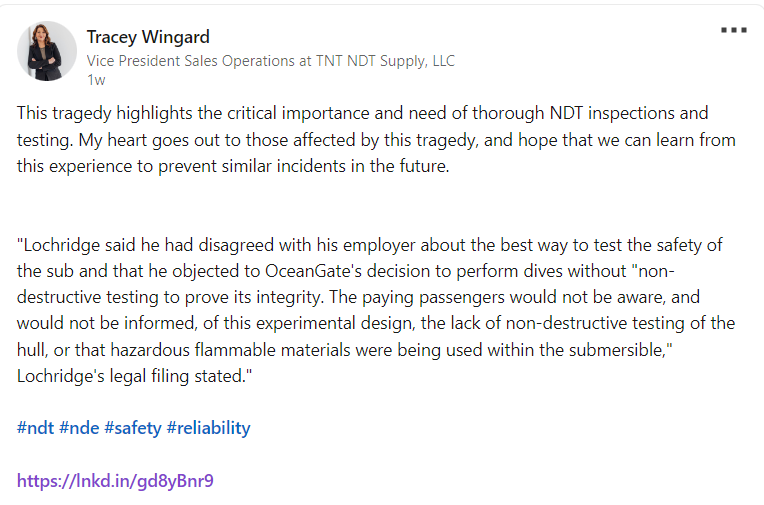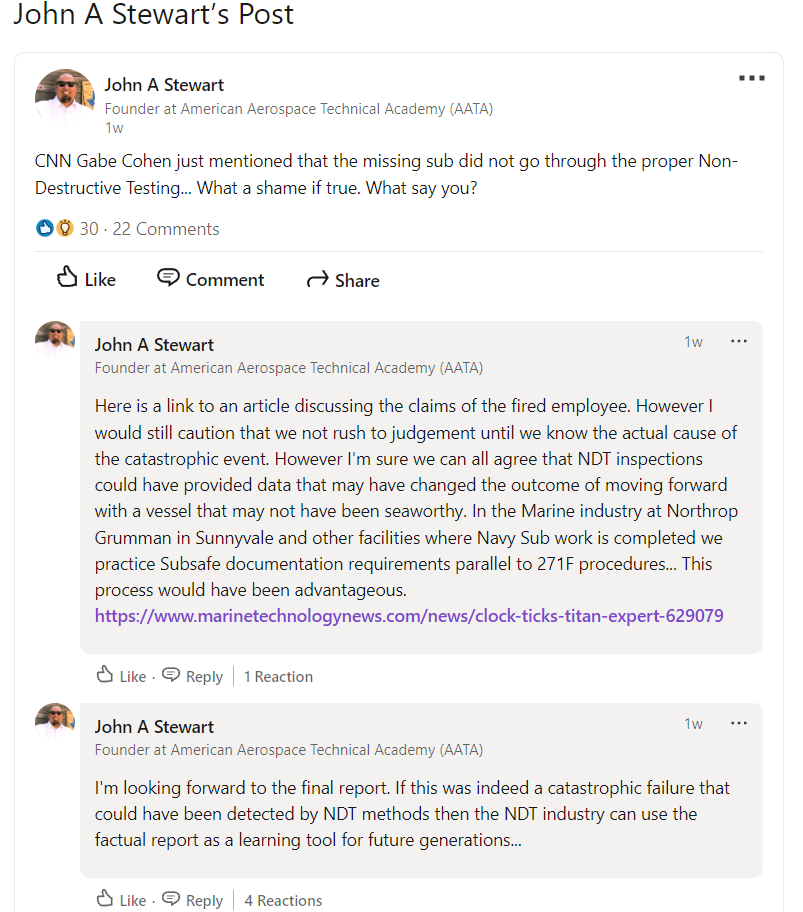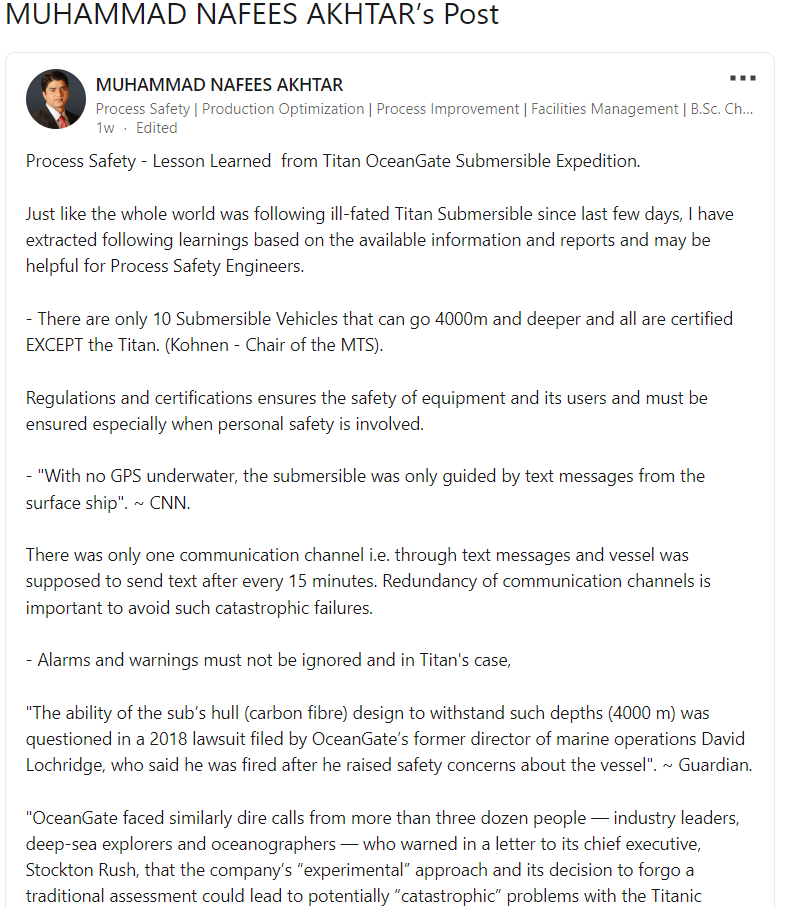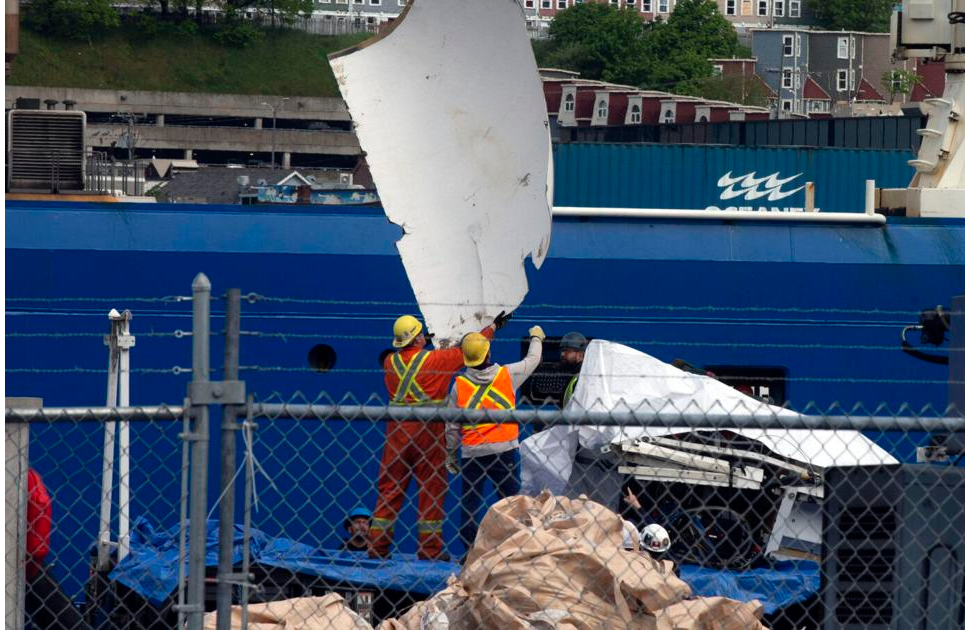"The tragic incident involving the Titan Submersible has sparked discussions and reflections on the Importance of Non-destructive Testing inspections, adherence to safety protocols, and the need for thorough investigations. A few opinions by industry experts have been discussed here.

Tracey Wingard, Vice President of Sales Operations at TNT NDT Supply, LLC in her post said that the incident serves as a stark reminder of the critical importance of thorough non-destructive testing (NDT) inspections and testing in ensuring safety and reliability. It is disheartening to learn that there were disagreements and concerns raised by an employee regarding the testing methods and safety measures employed by the company involved.
The fact that the submersible was being used for dives without proper NDT to prove its integrity is deeply concerning. This unfortunate event should prompt a reflection on the significance of adhering to established safety protocols and industry standards. NDT plays a crucial role in detecting potential flaws, defects, or weaknesses in materials and structures without causing damage. By implementing comprehensive NDT procedures, companies can ensure that potential risks are identified and addressed before they escalate into catastrophic incidents.
Strengthening regulations, improving industry practices, and prioritizing safety in all aspects of submersible operations are crucial steps. Investing in rigorous NDT inspections, maintaining clear lines of communication, and fostering a safety-first culture within organizations can help prevent such tragedies and protect lives. My thoughts are with the individuals affected by this unfortunate event, and I hope that their suffering can be a catalyst for positive change in the industry.
The impact of this tragedy extends beyond the immediate loss of life and injuries. It highlights the need for enhanced transparency and communication with passengers or customers. They have the right to be fully informed about the experimental design, safety measures, and potential hazards associated with the services they are receiving.
As we move forward, we must learn from this experience and take concrete actions to prevent similar incidents in the future said Tracey Wingard in her LinkedIn post.

John A Stewart is waiting for the final report to obtain accurate information about the incident's cause. If NDT methods could have indeed detected the impending catastrophic failure, the factual report can serve as a valuable learning tool for the NDT industry and future generations. It can prompt a reevaluation of existing practices, the development of more robust inspection protocols, and the reinforcement of the Importance of NDT Testing in ensuring safety and preventing similar incidents.
To prevent such tragedies in the future, collaboration between industry professionals, regulatory bodies, and organizations involved in NDT is crucial. He also said continuous improvement, knowledge sharing, and adherence to strict safety standards will be essential in maintaining the integrity and reliability of marine vessels and equipment. While it is important to refrain from rushing to judgment before the official investigation determines the actual cause of the catastrophic event, non-destructive testing (NDT) inspections could have played a significant role in providing crucial data that may have influenced the decision to proceed with an unseaworthy vessel. Practising
Practising Subsafe documentation needs and adhering to established procedures, such as the 271F procedures mentioned, can significantly enhance safety measures and prevent such incidents from occurring. The parallel implementation of these processes would have been advantageous and may have identified potential flaws or weaknesses in the vessel's structure said John A Stewart on Linkedin.

Muhammad Nafees Akhtar in his post claimed that the submersible incident has some important learnings for Process Safety Engineers. Firstly, it has emphasized the significance of regulations and certifications in ensuring the safety of equipment and individuals involved, particularly in high-risk activities. The fact that the Titan was the only uncertified submersible capable of reaching depths of 4000m highlights the importance of adhering to industry standards.
Another crucial lesson is the need for redundancy in communication channels. Relying solely on text messages from the surface ship, without the availability of GPS underwater, proved to be a significant limitation according to his post. Having multiple communication channels and systems in place can help avoid catastrophic failures and ensure effective communication in critical situations. The incident also sheds light on the importance of addressing safety challenges, concerns and not ignoring alarms or warnings. The lawsuit filed by a former director of marine operations raised doubts about the insufficient prototype testing of Titanic, and sub's hull design and its ability to withstand the depths it was intended for.
Taking shortcuts and prioritizing rapid innovation without proper assessment and certification processes can have fatal consequences, as exemplified by the Titan incident. The need for thorough risk assessment, emergency preparedness, and response planning becomes evident in such cases. Balancing innovation with wisdom and considering the long-term safety implications is crucial for everyone involved.
The lessons learned from the Titan Submersible incident serve as reminders to prioritize safety, adhere to regulations and certifications, establish robust communication systems, address Safety challenges and design considerations in Titan Submersible, and conduct thorough risk assessments said Muhammad Nafees Akhtar.
The opinions shared to highlight the critical role of NDT inspections in ensuring safety and reliability, emphasizing the significance of identifying potential flaws or weaknesses before catastrophic events occur. They have the right to be informed about experimental designs, safety measures, and potential hazards associated with the services they receive. Strengthening regulations, improving industry practices, and fostering a safety-first culture are crucial steps to prevent similar incidents in the future.
Ultimately, the incident serves as a learning opportunity for the NDT industry and other stakeholders. Collaboration, continuous improvement, and knowledge sharing are vital to prevent similar tragedies in the future. By prioritizing safety, investing in rigorous inspections, and maintaining open communication, the industry can work towards ensuring the integrity and reliability of marine vessels and equipment.
"









